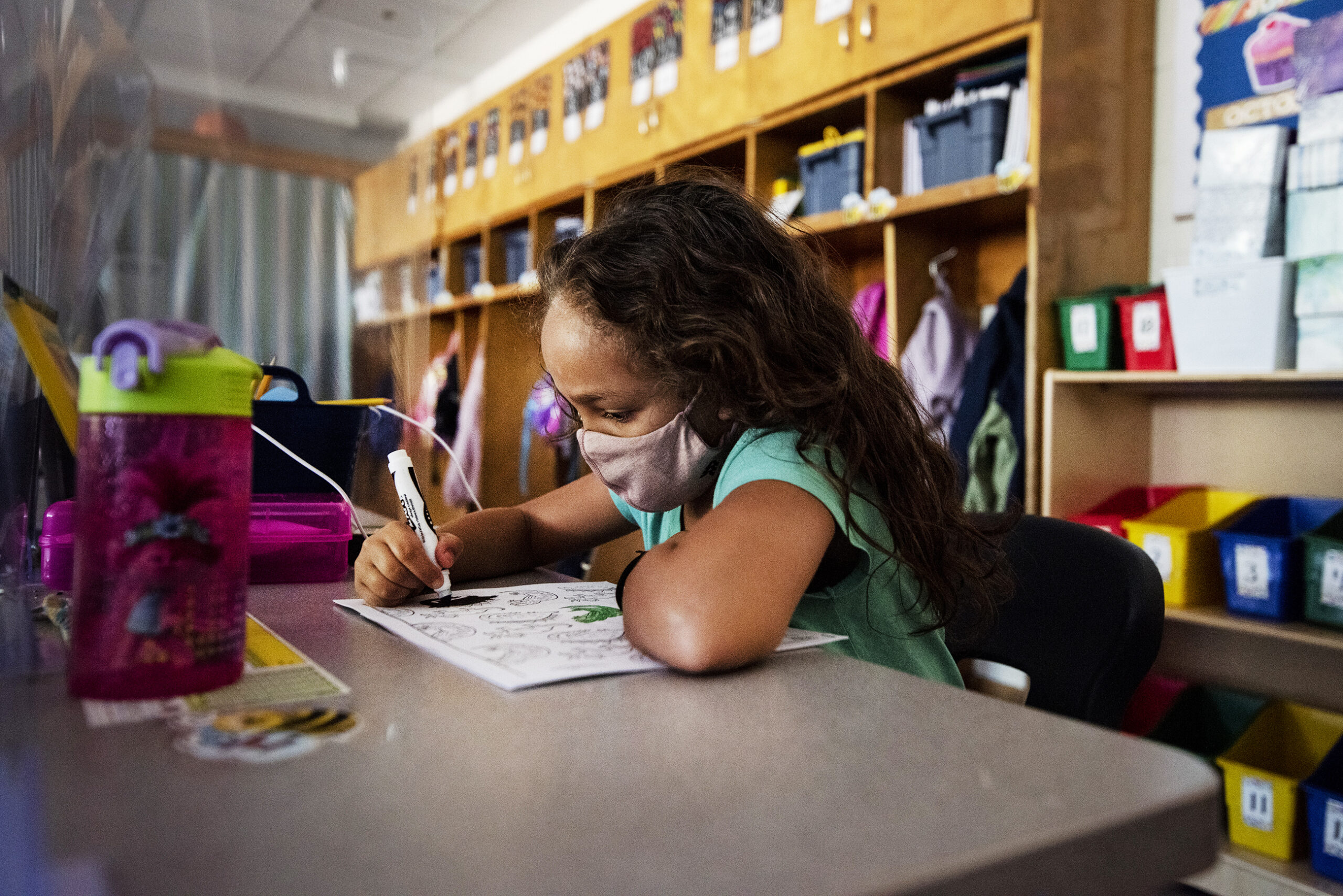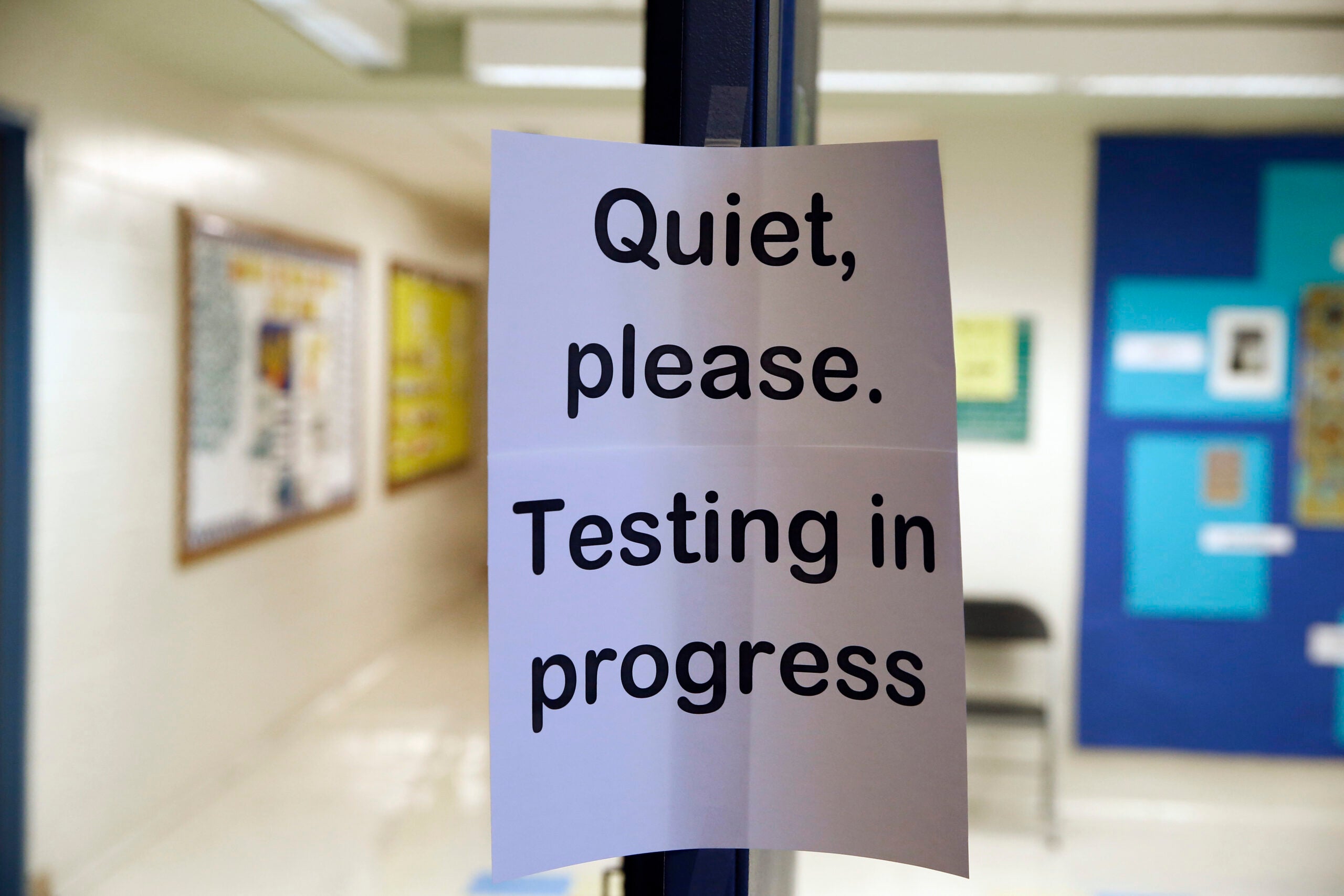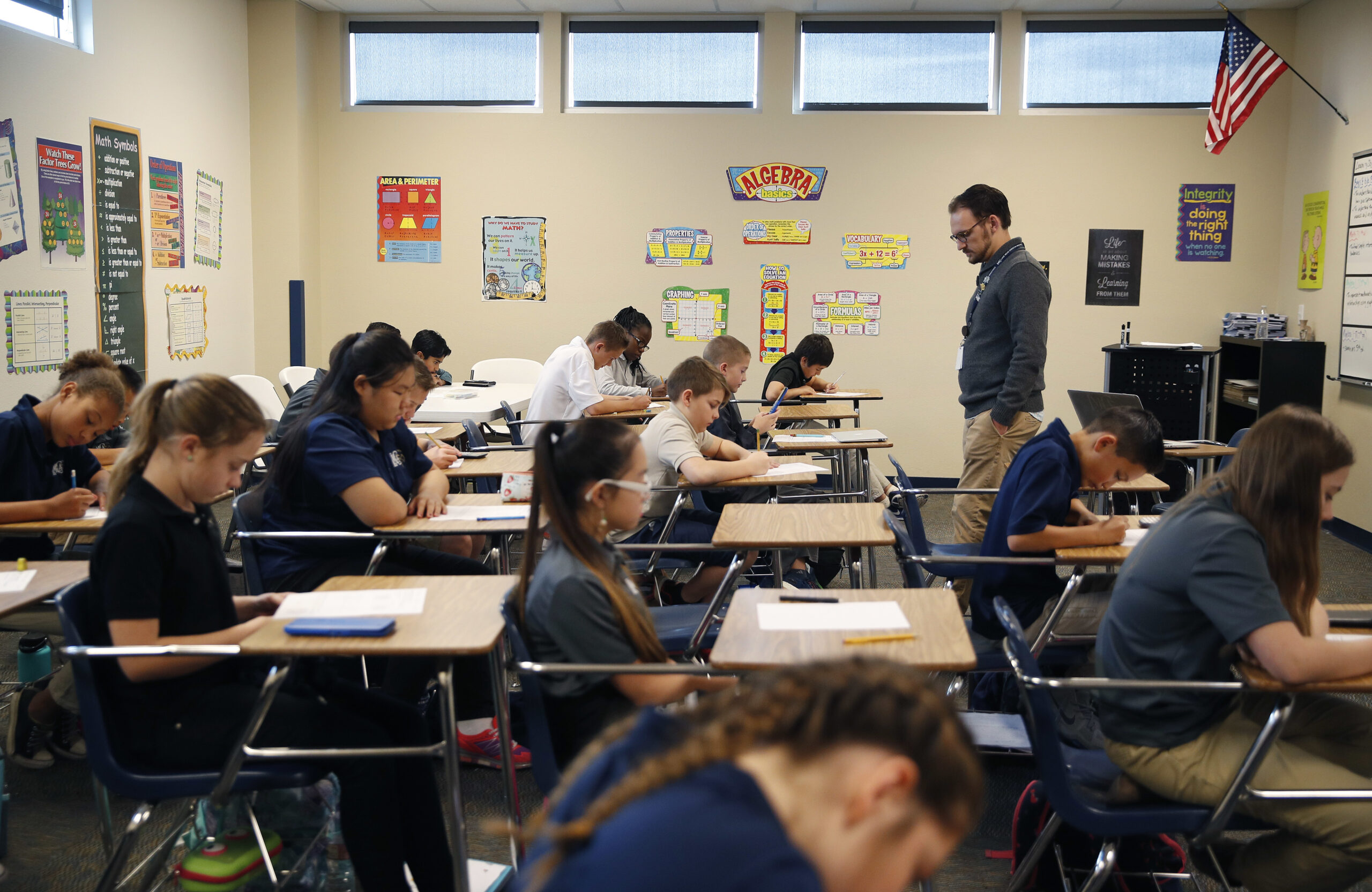Wisconsin education officials said standardized test data from this spring shows signs of recovery after significant declines in English and math proficiency during the COVID-19 pandemic.
English language arts proficiency went up 3.5 percentage points from the previous year, while math proficiency increased by 4.2 percentage points. But both proficiency levels remain well below pre-pandemic levels.
Part of the improvement in proficiency levels could be due to higher participation rates among students in grades 3-11. During the 2020-2021 school year, participation rates dropped significantly, with only 84 percent of all enrolled students taking English exams and 85 percent of students testing in math.
News with a little more humanity
WPR’s “Wisconsin Today” newsletter keeps you connected to the state you love without feeling overwhelmed. No paywall. No agenda. No corporate filter.
Those rates were much closer to normal levels this spring, with 92.9 percent of eligible students participating in English testing and 93.9 percent taking math exams. Those rates are still about 3 percentage points lower than what they were in the 2018-2019 school year.
Duane Dorn, education consultant for DPI’s Office of Educational Accountability, said while increased participation did boost the overall percentage of students who scored at the proficient level, officials are confident that student learning has also improved.
“There has definitely been some improvement for most of the grades, especially if we look at average scores,” Dorn said.
He said students’ test score averages are not impacted by participation rates and those scores did improve in spring 2022.
The data from the Wisconsin Student Assessment System for the 2021-2022 school year shows that 35.5 percent of students in public schools and parental choice programs were proficient or advanced in English language arts. That’s 3.8 percentage points lower than in 2019.
Math proficiency was at 35.2 percent this spring, coming in 4.9 percent lower than the 2019 rate.
The state does not have testing data for all grades from the 2019-2020 school year because the COVID-19 pandemic caused widespread school closures in the spring of 2020, when tests are typically administered. The state does have testing data for 11th graders who took the ACT that year.
For 11th graders, English proficiency bounced back to 35 percent this year, about 1.8 percent below 2019-2020 levels. However, math proficiency scores only improved by 1.5 percentage points to 27 percent this spring, remaining well below the 2020 level at 32.5 percent.
Wisconsin is not alone in continuing to struggle with learning proficiency from the pandemic.
A study released earlier this month by the National Center for Education Statistics looked at testing scores for 9-year-olds across the country from 2020 to 2022. It found that math scores decreased for the first time in the history of the testing regimen, falling seven percentage points. Reading scores saw their largest decline in 30 years, falling five percentage points.
The study found the declines impacted all regions of the country and affected students of most races, though students of color saw some of the steepest decreases.
Dorn said it’s difficult to get a clear picture of how achievement gaps have been affected in Wisconsin.
“Some of those gaps, they look like they might be shrinking, but that might be a result of both the focal group as well as alternative groups might be both having a lower level of achievement than they have historically,” he said.
Laura Adams, policy initiatives advisor for DPI, said as educators and families think about the progress that still needs to be made to help learning recover, it’s important to remember how disruptive the pandemic was for schools across the state.
“This is an unprecedented interruption to student learning. There is no roadmap. We’re not sure what, what it looks like to recover,” Adams said.
She said schools need more investment from the state, especially in per pupil spending, to ensure teachers have the resources needed to help students catch up.
Test scores for individual schools and districts are available on DPI’s website. The data is also a major component of the state’s school and district report cards, which will be issued in November.
Wisconsin Public Radio, © Copyright 2025, Board of Regents of the University of Wisconsin System and Wisconsin Educational Communications Board.







